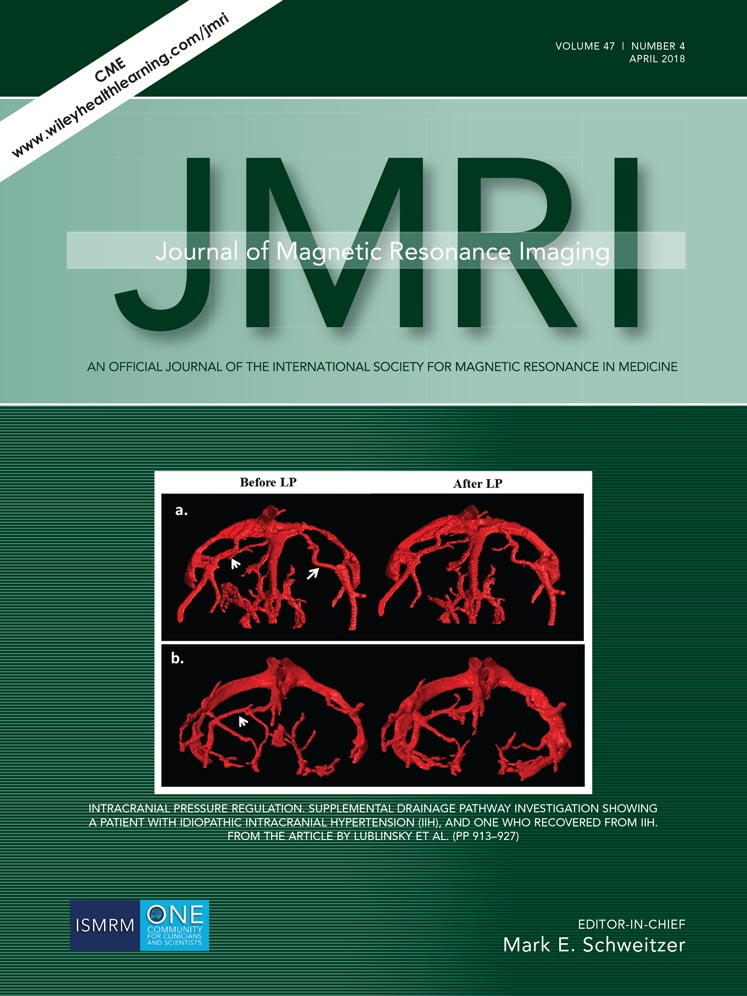Textural features of dynamic contrast-enhanced MRI derived model-free and model-based parameter maps in glioma grading
Abstract
Background
Presurgical glioma grading by dynamic contrast-enhanced MRI (DCE-MRI) has unresolved issues.
Purpose
The aim of this study was to investigate the ability of textural features derived from pharmacokinetic model-based or model-free parameter maps of DCE-MRI in discriminating between different grades of gliomas, and their correlation with pathological index.
Study Type
Retrospective.
Subjects
Forty-two adults with brain gliomas.
Field Strength/Sequence
3.0T, including conventional anatomic sequences and DCE-MRI sequences (variable flip angle T1-weighted imaging and three-dimensional gradient echo volumetric imaging).
Assessment
Regions of interest on the cross-sectional images with maximal tumor lesion. Five commonly used textural features, including Energy, Entropy, Inertia, Correlation, and Inverse Difference Moment (IDM), were generated.
Results
All textural features of model-free parameters (initial area under curve [IAUC], maximal signal intensity [Max SI], maximal up-slope [Max Slope]) could effectively differentiate between grade II (n = 15), grade III (n = 13), and grade IV (n = 14) gliomas (P < 0.05). Two textural features, Entropy and IDM, of four DCE-MRI parameters, including Max SI, Max Slope (model-free parameters), vp (Extended Tofts), and vp (Patlak) could differentiate grade III and IV gliomas (P < 0.01) in four measurements. Both Entropy and IDM of Patlak-based Ktrans and vp could differentiate grade II (n = 15) from III (n = 13) gliomas (P < 0.01) in four measurements. No textural features of any DCE-MRI parameter maps could discriminate between subtypes of grade II and III gliomas (P < 0.05). Both Entropy and IDM of Extended Tofts- and Patlak-based vp showed highest area under curve in discriminating between grade III and IV gliomas. However, intraclass correlation coefficient (ICC) of these features revealed relatively lower inter-observer agreement. No significant correlation was found between microvascular density and textural features, compared with a moderate correlation found between cellular proliferation index and those features.
Data Conclusion
Textural features of DCE-MRI parameter maps displayed a good ability in glioma grading.
Level of Evidence: 3
Technical Efficacy: Stage 2
J. Magn. Reson. Imaging 2018;47:1099–1111.




